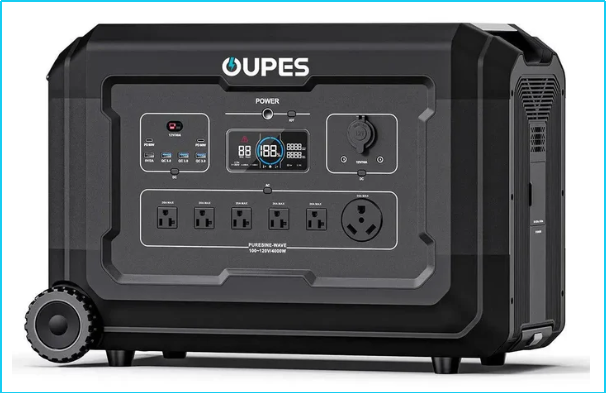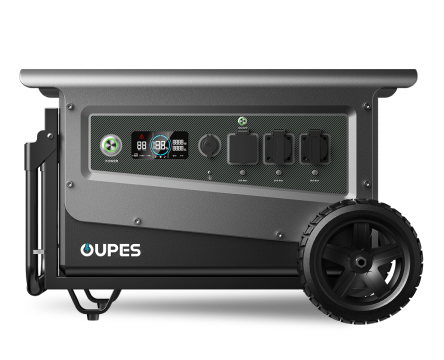
Overview
Watching the Northern Lights—whether in Alaska, Canada, Iceland, Norway, or Finland—is a bucket-list experience for millions of travelers. However, Aurora viewing typically involves waiting outdoors for hours in freezing temperatures, often far from civilization and electrical power sources.
This is where portable power solutions, especially portable solar generators and battery-based power stations, significantly elevate comfort, safety, and the ability to capture high-quality photos or videos. From powering heated blankets to keeping cameras running through sub-zero nights, a portable generator has become an essential Aurora-hunting tool.
This guide explains why, using authoritative insights from the National Weather Service (NWS), the National Renewable Energy Laboratory (NREL), and cold-weather safety research organizations, while offering practical recommendations for a modern, reliable, and eco-friendly setup.
Why a Portable Generator Matters for Northern Lights Trips
1. Remote Locations Lack Reliable Power
The best Aurora viewing spots are typically away from light pollution, often on frozen lakes, mountain passes, or rural open plains. These locations rarely have access to electrical outlets for charging electronics or powering heaters.
2. Cameras and Tracking Equipment Require Continuous Power
Aurora photography uses long exposures, interval shooting, or time-lapse modes—all of which drain batteries rapidly, especially in extreme cold. Lithium camera batteries can lose 30–50% of their capacity at −20°C (−4°F), according to data from the U.S. Department of Energy.
3. Winter Conditions Increase Survival Equipment Needs
Essential cold-weather tools require stable power:
- Heated blankets or heated vests
- Electric hand warmers
- Portable LED lanterns and flood lights
- Satellite phones / GPS units
- Car fridge or food warming equipment
- Drone batteries for Aurora video capture
Portable Solar Generators vs. Gas Generators for Aurora Viewing
While both can provide power in remote areas, their performance and practicality differ significantly in extreme nighttime environments. Below is a comparison to help determine which is ideal for Aurora trips.
| Feature | Portable Solar Generator / Power Station | Gas Generator |
|---|---|---|
| Noise Level | Silent (ideal for nature observing) | Very loud (disrupts viewing and wildlife) |
| Cold-Weather Starting Reliability | Excellent with LiFePO4 batteries | Fuel engines often struggle below freezing |
| Indoor / Vehicle Use | Safe—zero emissions | Dangerous—Carbon monoxide risk |
| Environmental Impact | Clean, renewable energy | Emits fumes, requires gasoline |
| Maintenance | Minimal | High—oil changes, filters, fuel care |
| Ideal For Aurora Hunting? | Yes—best choice | No—noise and fumes make it impractical |
Portable solar generators clearly align better with the quiet, peaceful nature of Aurora viewing and the need for safe, indoor-compatible power.
How a Portable Power Station Enhances Your Viewing Experience
1. Powering Photography and Videography Gear
Aurora photographers often run multiple devices:
- Mirrorless/DSLR cameras
- Star trackers
- Portable monitors
- External battery warmers
- Drones and drone chargers
A portable power station keeps all gear running throughout the night without needing to return to your vehicle.
2. Keeping You Warm During Long Waits
Waiting for Aurora activity can take hours. Portable generators can power:
- Electric blankets
- Heated seats or pads
- Portable ceramic heaters (low-watt models)
- 12V car heaters (safe power draw)
3. Supporting Car Off-Mode Power
Keeping your vehicle idling for warmth or charging devices wastes fuel and creates emissions. A portable power station eliminates the need to run the engine, saving fuel for emergencies.
4. Lighting Up the Location Without Light Pollution
Aurora viewing requires low-light conditions. Portable power stations can run:
- Low-intensity red LED lights (protects night vision)
- Directional flood lights away from the viewing area
- Basecamp lighting with adjustable brightness
5. Running Communication and Safety Equipment
Remote Arctic and sub-Arctic areas often have limited cell coverage. Rechargeable safety devices include:
- Satellite communicators
- Personal locator beacons
- Two-way radios
- GPS navigation units
Recommended Power Setup for Northern Lights Viewing
How Much Power Do You Need?
Your energy needs depend on what you plan to power. Here is a typical estimate for a 6-hour Aurora session:
| Device | Average Wattage | Estimated 6-Hour Consumption |
|---|---|---|
| Camera + lens heater | 10–20W | 60–120Wh |
| Electric blanket | 60–100W | 360–600Wh |
| LED lights | 5–15W | 30–90Wh |
| Satellite communicator | 5W | 30Wh |
| Drone battery charger | 40–60W | 240–360Wh |
Total: approximately 720–1200Wh for one full Aurora session. A 1000–2000Wh portable power station is therefore ideal.
How OUPES Portable Solar Generators Support Aurora Expeditions
OUPES portable solar generators—equipped with LiFePO4 batteries, pure sine wave inverters, and high solar input capacity—are well-suited for cold-weather Aurora trips. While this article is primarily educational, OUPES serves as an example of how modern power stations support travelers with:
- Quiet operation (no noise pollution during viewing)
- Safe indoor operation due to zero emissions
- Long battery cycle life (>3500 cycles)
- Multiple AC, DC, USB-A, and USB-C outputs
- Compatibility with foldable solar panels for daytime recharging
For multi-night Aurora hunting, having a solar-rechargeable power station ensures that your gear stays powered without relying on fuel or grid access.
Expert Tips for a Safe and Comfortable Aurora Trip
1. Protect Your Electronics From the Cold
Keep batteries insulated using padded bags or chemical warmers. Cold can permanently reduce battery efficiency.
2. Use Red Lights Instead of White
Red lighting preserves night vision and prevents overexposure during long-exposure photography.
3. Bring Backup Power Cables and Adapters
Cold weather can stiffen or damage cables—always pack spares.
4. Check the Aurora Forecast Before Departure
Use NOAA Space Weather Prediction Center (SWPC) and local meteorological agencies for the most accurate KP level predictions.
5. Avoid Exhausted Batteries When Returning to Vehicle
Keep essential power devices charged to avoid emergencies during long drives back from remote viewing points.
FAQ
1. Do portable solar generators work in freezing temperatures?
Yes. LiFePO4-based power stations perform well in cold conditions, although charging may be limited below 0°C. Discharging functions normally.
2. Can I use a gas generator for Northern Lights trips?
Technically yes, but it is not recommended due to noise, fumes, and freezing-start issues.
3. How much power do I need for a night of Aurora photography?
Typically 700–1200Wh depending on heaters, cameras, and lighting equipment.
4. Are portable power stations safe to use in cars or tents?
Yes. Battery-based units (like solar generators) produce no exhaust, making them safe for enclosed spaces.
5. Can a portable generator power a heater?
Small electric blankets and compact 12V heaters are suitable. High-wattage space heaters may exceed inverter limits.
6. Can solar panels recharge the generator during winter?
Yes, but efficiency is weather-dependent. Cold temperatures actually improve panel efficiency, though sunlight hours are limited.




























